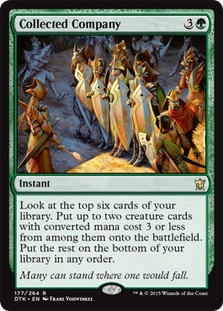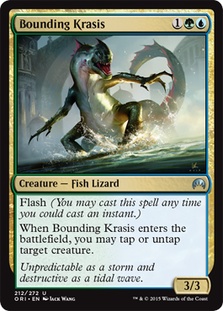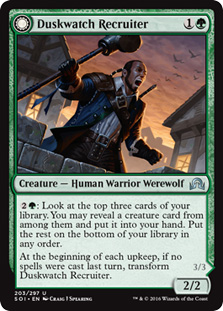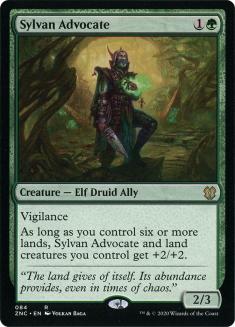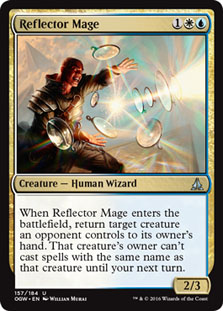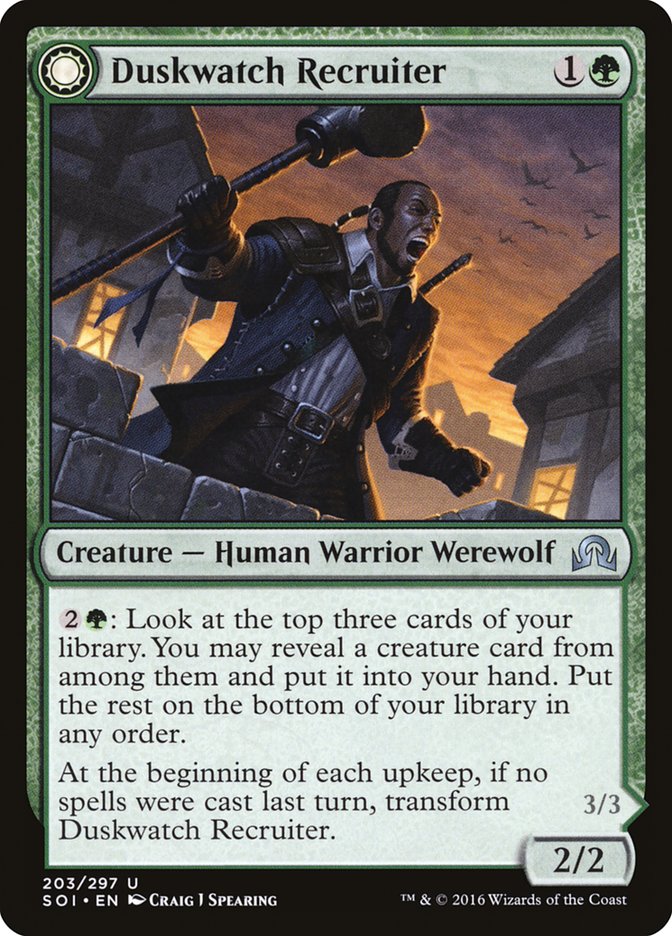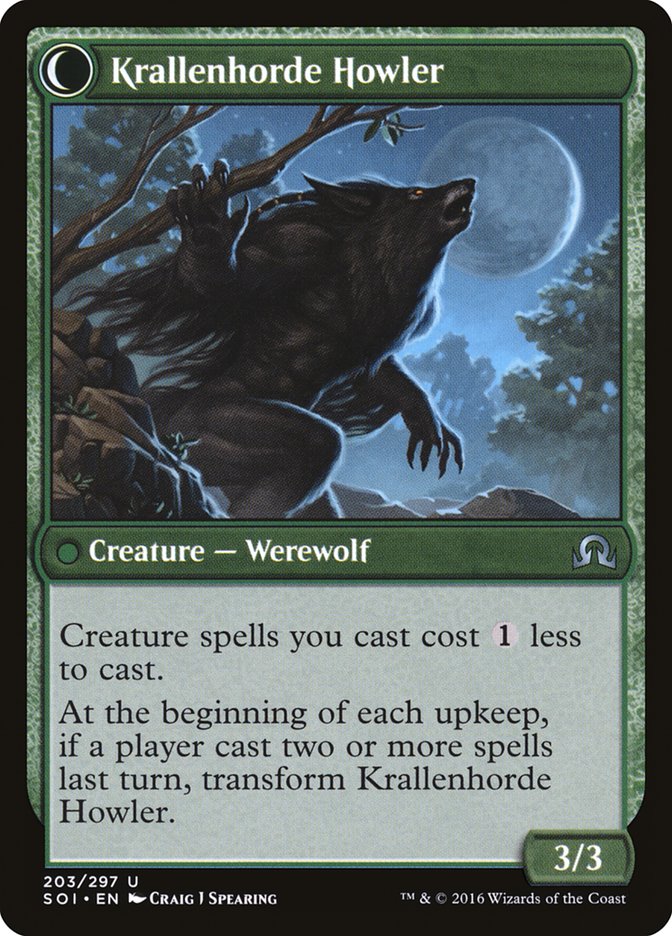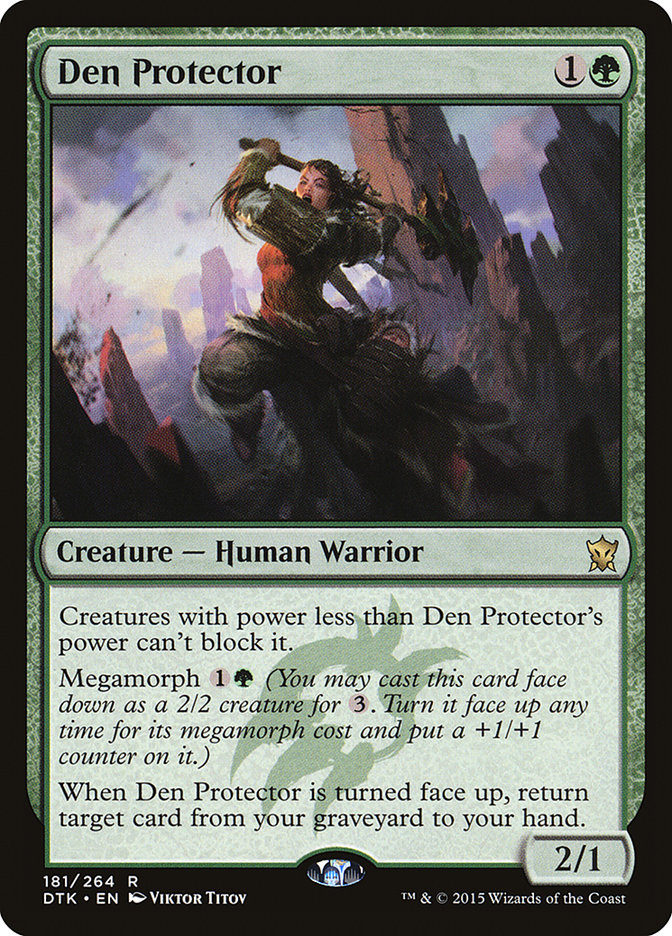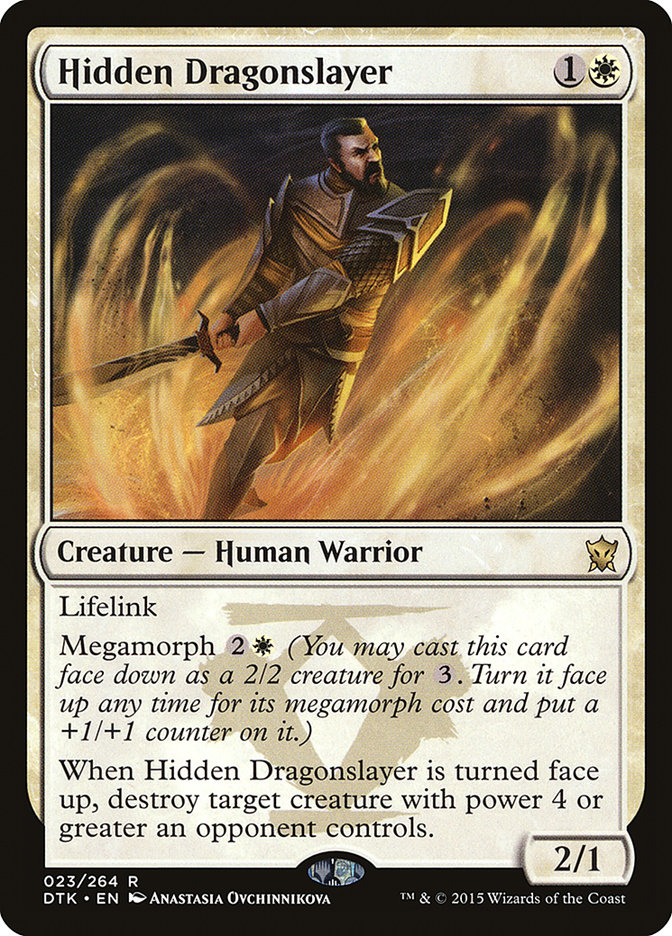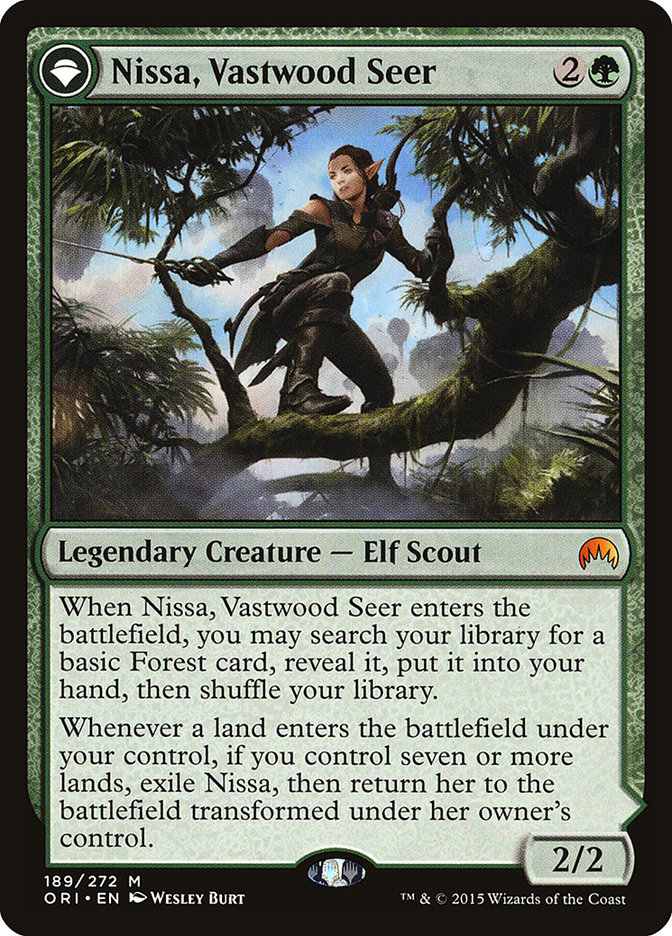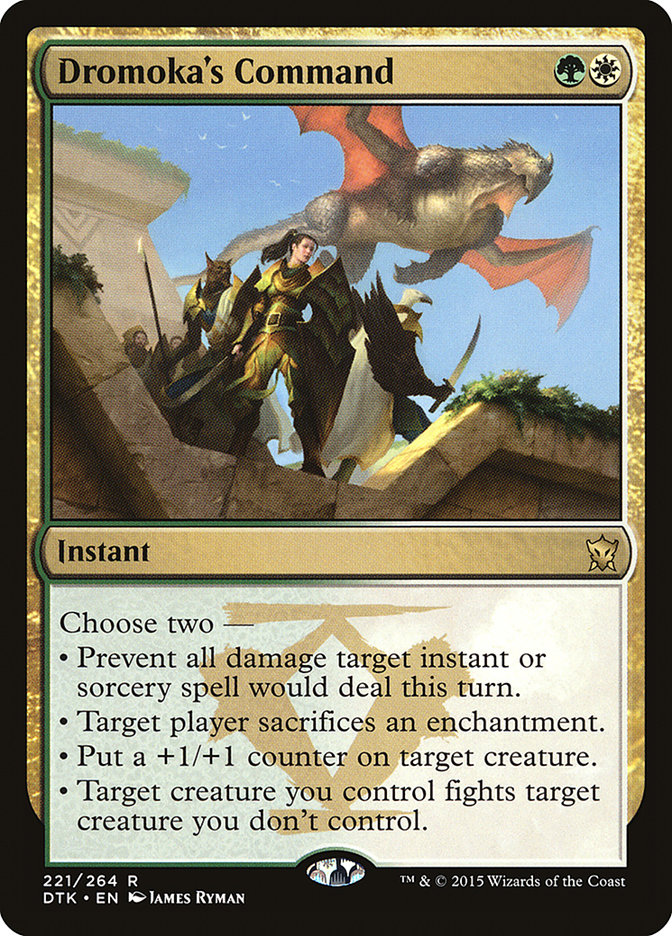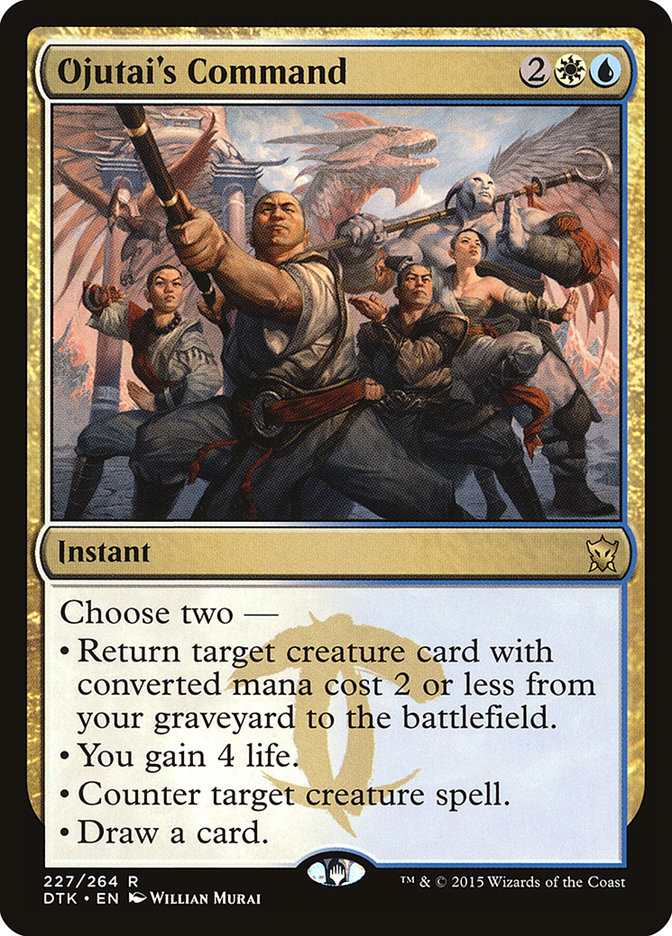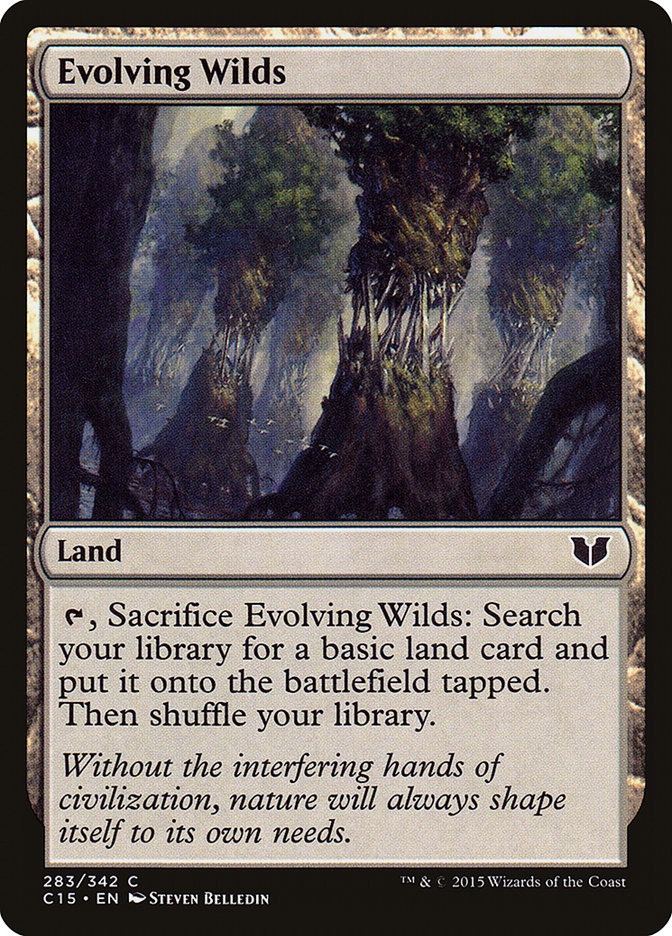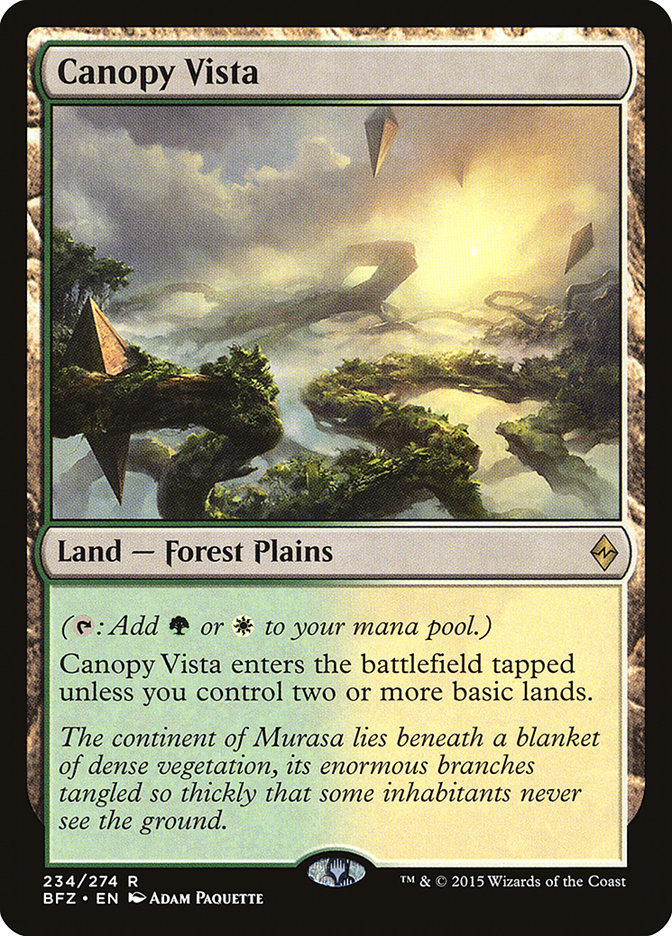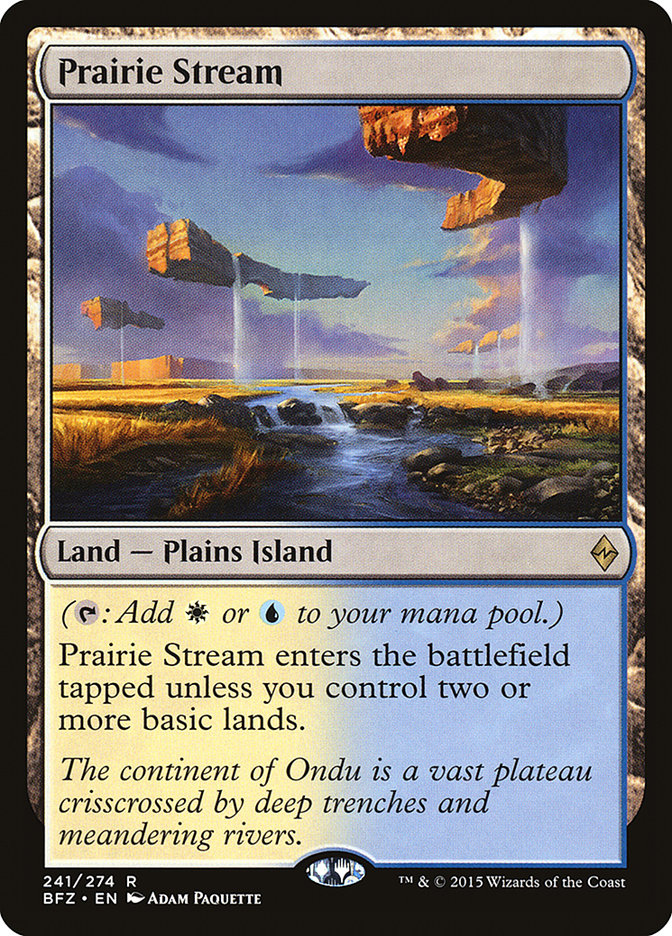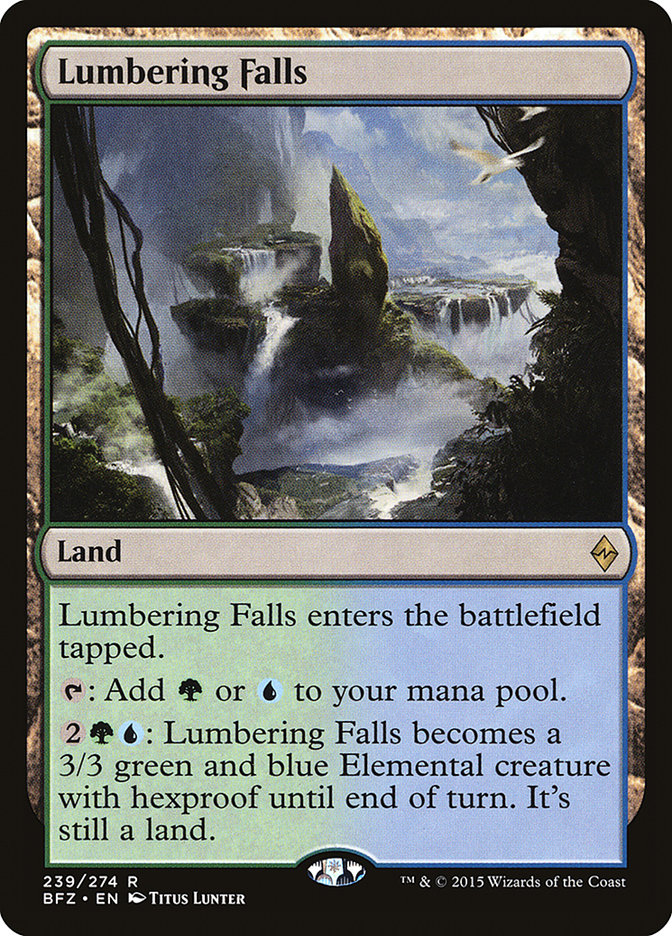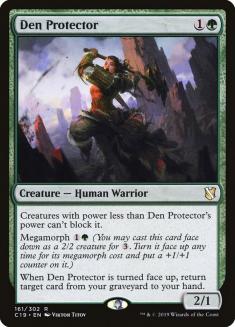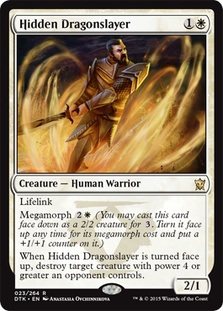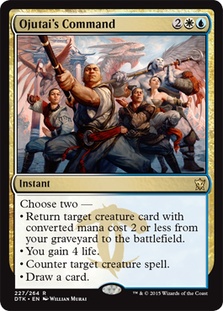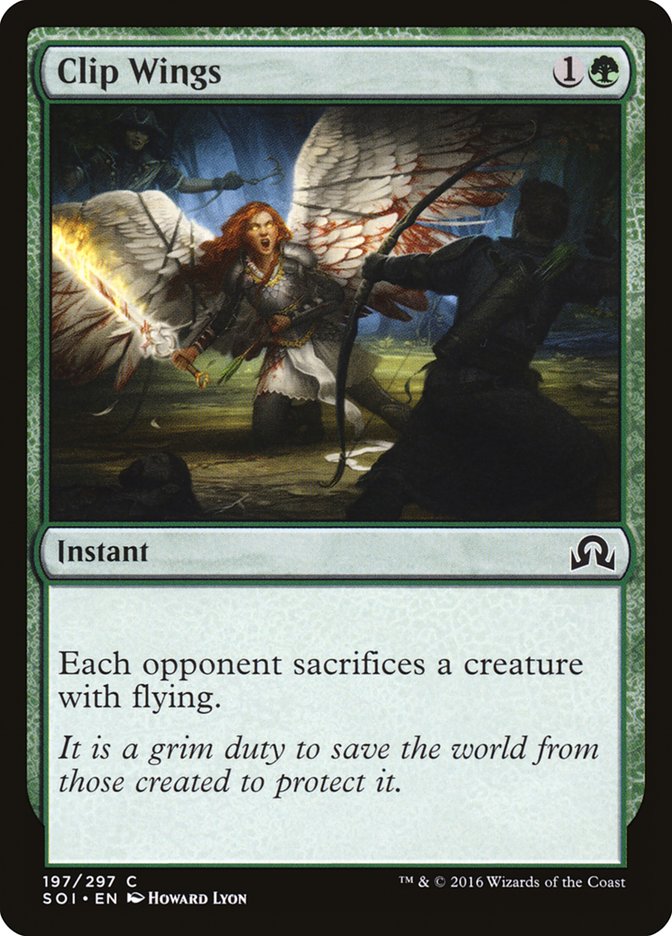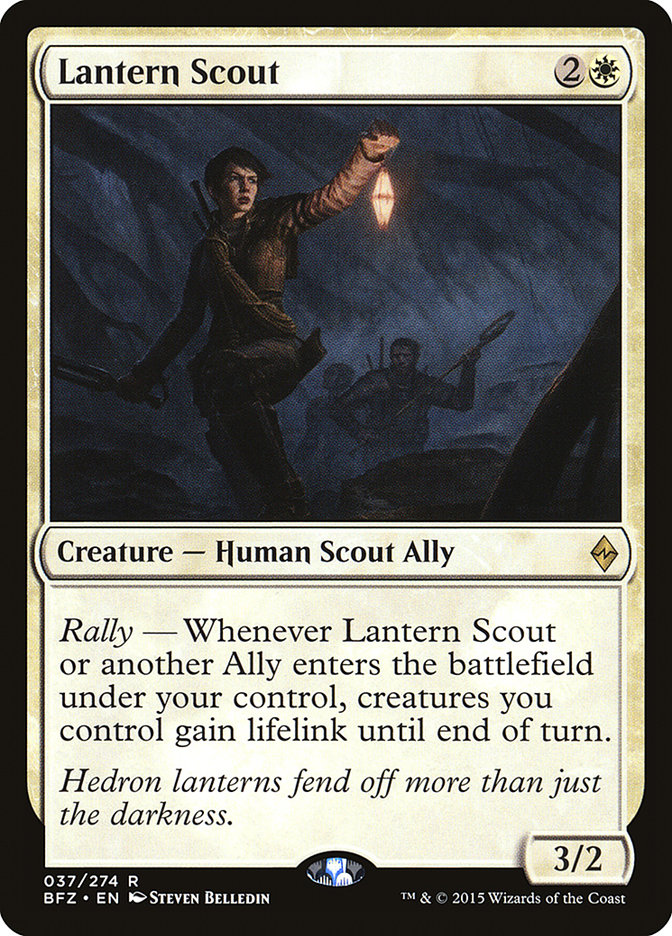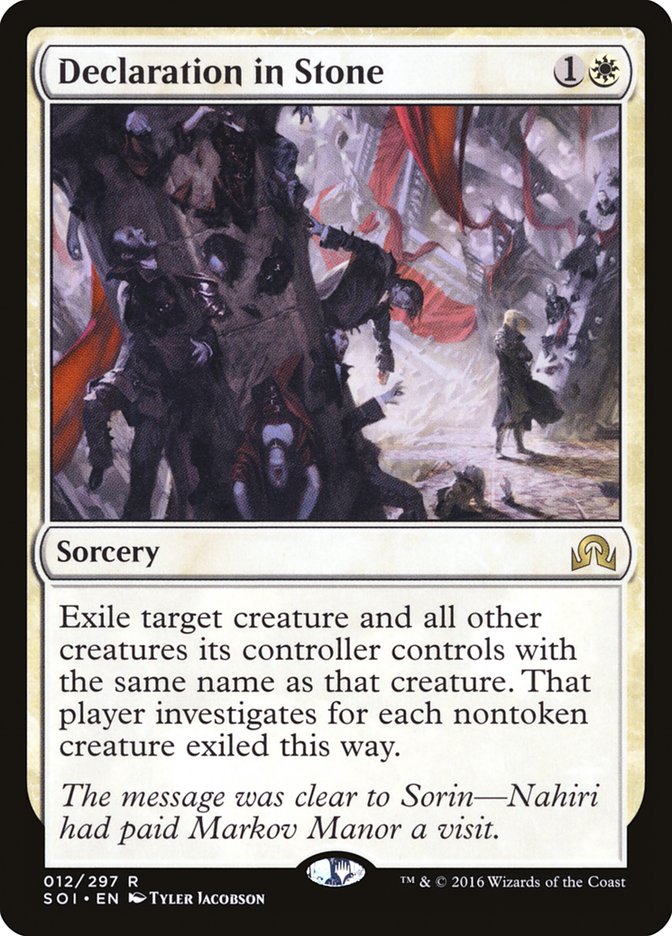It’s breakfast time at the Best Western Hotel in Baltimore. The TV drones on in the background as a gaggle of half-awake people put their breakfasts together. I survey what I have prepared for myself: Froot Loops cereal, buttered toast, eggs, bacon, and, most importantly, a freshly made waffle.
I judge the quality of hotels by whether or not they have a waffle maker with their free breakfast.
This morning would normally be just like any other Saturday morning on a Magic weekend. Get up, devour your breakfast, discuss those last few sideboard cards, and rush off to the venue to register and fill out your decklist. However, this morning is very different from most typical tournament mornings.
It’s Friday.
The tournament doesn’t start until tomorrow.
We have plenty of work to do today. During the last two weeks, Dan Jessup, Pete Ingram, Andrew Jessup, Kevin Jones, and I have been testing as much as life will allow for this event. While we have made some good progress, today is the day we must make our choices. We all came together and decided we wanted to properly prepare for this event and do well, so we drove down to Baltimore on Thursday night to give ourselves a full extra day to test, free of all outside distractions.
We tried all sorts of decks. R/W Eldrazi, U/R Dragons, U/W Humans, B/R Madness Control, you name it. By this point, Andrew had mostly settled on U/W Humans, while the rest of the group was still fairly undecided. At the start of the day on Friday I had been on R/W Eldrazi.
We had somewhat dismissed Kevin Jones’s Bant Company deck early in the testing process, as the mana seemed too inconsistent and it was lacking enough quality creatures. However, he kept battling with it, and eventually it was my turn to play against him with U/W Humans.
On his turn 4, he passed the turn with four mana untapped. I drew my card, surveyed the battlefield, and after about a minute declared I had absolutely no idea what to do. If Kevin had a Collected Company, I had to play one way. If he had an Ojutai’s Command, I had to play another. If he had Bounding Krasis? Another. Dromoka’s Command? Another.
It was at this point that I started to take a serious look at the deck.
Andrew suggested Duskwatch Recruiter, a card that had overperformed in a B/G Company deck he had brewed, and it was off to the races. The manabase was tweaked, cards slipped in and out, a sideboard crafted.
I couldn’t be more proud of the result.
Obviously you are going to be happy when you win a major tournament, but even if I had been eliminated in the first round of the Top 8, the tournament would have been a resounding success. Five friends got together, brewed and battled, and ended up coming in first, tenth, and eleventh place out of an event with almost 700 players. You really couldn’t ask for more.
Without Kevin, Pete, Dan, and Andrew’s help with testing, there’s zero chance I win this event, and for all their hard work, I thank them.
Creatures (27)
- 1 Hidden Dragonslayer
- 1 Den Protector
- 4 Jace, Vryn's Prodigy
- 1 Nissa, Vastwood Seer
- 4 Bounding Krasis
- 4 Reflector Mage
- 4 Sylvan Advocate
- 2 Archangel Avacyn
- 2 Tireless Tracker
- 4 Duskwatch Recruiter
Lands (25)
Spells (8)

Bant Company is a deck that thrives on timing.
Even though you are a deck with 27 creatures in it and only eight spells, a disproportionate number of your cards operate at instant speed. Things like Collected Company and Bounding Krasis are somewhat obvious, but the timing of cards like Den Protector, Hidden Dragonslayer, Archangel Avacyn, Tireless Tracker, Dromoka’s Command, and Lumbering Falls is extremely important. You are often presented with a multitude of options every turn, as you not only need to decide which spells you want to cast but also when you want to play them. The deck is fairly difficult to pilot.
As a corollary, this makes the deck very difficult to play against. Very often you are going to be looking at a bunch of open mana and trying to decide exactly what your opponent is planning to do. Attacking into this deck is a nightmare, but trying to stay back and build a battlefield will leave you getting tempoed out by cards like Reflector Mage and Bounding Krasis.
A lot of work went into this decklist, so let’s look more closely at it.
The Core
These are the cards that should never be touched, as each is so much more powerful than the other options in your deck that you wish you could play more than four.
Collected Company is obviously the heart of the deck, and these are often your best four hits. Any time you end-step Collected Company into a Reflector Mage and a Bounding Krasis, you have created a monstrous tempo swing that will likely end the game. Sylvan Advocate is one of the best creatures in the format, playing defense early while being your primary win condition later.
Duskwatch Recruiter requires a little more explanation and is the card that makes the deck work. Duskwatch Recruiter does literally everything this deck wants to do.
On the front side, it provides a cheap body that essentially reads “pay three mana: draw a card” at instant speed, which is fantastic. What confused me about the card in my original evaluation, however, was how you couldn’t pass the turn with this ability up, leave mana up for something, and then activate it if you didn’t need to use your mana, Azure Mage-style. I viewed the fact it flipped if you passed with mana up as a downside rather than a bonus.
I couldn’t have been more wrong.
Krallenhorde Howler is everything this deck could want. It’s a Watchwolf-sized body, which is great, but more importantly it acts like a turbocharged Elvish Mystic for all of your creature spells.
One of the issues with Collected Company decks is that they are often jam-packed with three-mana creatures. This can lead to a logjam in the games where you don’t draw Company, as you can’t deploy your three mana creatures fast enough.
Krallenhorde Howler makes them cost two mana, and all is right in the world. Now you can play a Reflector Mage on your turn 4 and then cast a Bounding Krasis on their turn. This sort of mana efficiency is amazing in such a tempo-oriented deck and allows you to get way ahead. It also helps to smooth out your worse draws to make the deck more consistent.
And if Krallenhorde Howler ends up flipping back to Duskwatch Recruiter? Oh well, might as well just draw some cards.
Once considered a core component to Collected Company decks, Jace, Vryn’s Prodigy has lost some of his luster with no more fetchlands to turbocharge him. Too often Jace was just a Merfolk Looter for the first few turns of the game, and without using your graveyard for value in any real way, that’s just not good enough. We recognized that Jace was not as good as he had previously been, but perhaps we were too shy about trimming him.
You still want some copies of Jace in your deck, as he is a fine Collected Company hit and has a very large impact on the game once flipped, but he is not the house he once was in this deck.
Another great new addition, Tireless Tracker is fantastic. I had a Tireless Tracker in each of my Prerelease Sealed decks and was floored with how good it was. The body is already respectable, it’s almost impossible to not get at least a two-for-one out of it, and often it just takes over the game.
Tireless Tracker overperformed against all but the most aggressive of decks and is an easy candidate for promotion.
Den Protector is a powerful card but not exactly what a Collected Company deck is interested in. It’s a very weak hit off of Collected Company and is also fairly mana intensive to use. Still, Den Protector is a powerful card and a nice tool to have in the mid- to late-game. Morphs also play very well with Krallenhorde Howler, who makes playing and flipping them in the same turn much easier.
In the same vein, Hidden Dragonslayer also overperformed. Hidden Dragonslayer allows you to put a removal spell into your deck that is also a hit for Collected Company and also benefits greatly from the cost reduction of Krallenhorde Howler. Playing him face-up as a two-drop lifelinker against aggressive decks is also very reasonable, especially against the hyper-aggressive decks like Mono-White Humans.
If only Nissa, Vastwood Seer could get any basic land type, then we’d be talking. As is, Nissa is a reasonable card that is obviously quite good in longer games. If you are able to flip Nissa, there’s no doubt she is powerful, but in the early-game she is rather lackluster. Still, you need to have some powerful Collected Company hits in your deck and she does qualify as that.
Of course, there is one creature in the deck that does not qualify as a Collected Company hit. Archangel Avacyn is the new lady of the moment and she certainly made her presence felt in Baltimore. It’s going to take a while for everyone to adjust to playing against Avacyn as she is a major game-changer. She also slots very well into the deck as another tricky flash threat to give your opponent even more headaches.
In most decks, it’s usually pretty easy to tell when your opponent has Avacyn, so don’t foolishly attack into it! Part of the draw to Avacyn in this deck is that we have so many instant-speed cards that it’s hard to tell when we have it or don’t.
Speaking of tricky instant-speed cards, Dromoka’s Command falls right in line with the deck. An instant-speed card with many options that’s hard to play around? Yep, that’s about where we are.
Dromoka’s Command is also very good with the huge number of enchantments currently seeing play in the format. A lot of the removal options in Standard are enchantment-based, and even without that mode Dromoka’s Command is a solid removal spell.
Back when Faeries was a big deck, the old turn 4 conundrum was “do they have Mistbind Clique or Cryptic Command?” Very often you would play around one, only to get completely blown out by the other. This deck features a similar conundrum with Collected Company and Ojutai’s Command. Normally it’s not that hard to sniff out an Ojutai’s Command when a deck passes with four mana up, but this deck’s natural state is to pass on turn 4 with mana up, so it often ends up being disguised. As such, Ojutai’s Command is a fantastic one-of for the deck.
The Mana
One of the biggest points of contention with the deck was the manabase. There was major concern that it would not come together, and despite significant work being put into it, I’m still not sure if it is correct.
The focus is a reasonable amount of basic lands backed by Evolving Wilds and the Cattle lands. You are sometimes going to miss your curve by playing a land that enters the battlefield tapped, and you are sometimes going to have to mulligan hands with two such lands because you can’t make a play before turn 4. That’s all fine because the payoff is an extremely high power level, and Collected Company and Reflector Mage go a long way towards getting that tempo back very quickly.
Lumbering Falls is also fantastic. Many decks struggle with dealing with it, and between it, Sylvan Advocate, and good end-step Collected Company casts, you can swing a game in a hurry.
The Sideboard
The sideboard starts with a number of singleton cards that are already present in the maindeck. One of the most important things about sideboarding with a Collected Company deck is to keep your creature count high. If your sideboard is all spells, you will lack the creature density in post-sideboard games to keep Collected Company potent.
As such, these cards are all good in their respective matchups and are pretty much the best creature options in those matchups. Having extras of maindeck cards in your sideboard is usually poor deckbuilding, but here it is a necessity due to the deckbuilding restrictions that Collected Company requires.
Ahhh… I would not be surprised if this is the first part of this article people are reading. If so, welcome! Make sure to scroll up and read the rest of it when you are done here; there’s a lot of great information interjected with some nice storytelling and humor.
This is the card I’ve received the most questions about, so here is your answer.
Ramp.
Microphone? Dropped.
The goal was to find a quick card to apply maximum pressure to ramp. Because their removal usually only consists of Kozilek’s Return, putting Invocation of Saint Traft on a Sylvan Advocate or a Reflector Mage seemed like a great plan. I only played against Ramp once and my foe boarded in three Roast.
You can safely cut this card from your sideboard.
This card kills creatures that have flying and is extremely important against cards like Dragonlord Ojutai, Dragonlord Silumgar, Archangel Avacyn, and Archangel of Tithes. Simple and effective.
Against decks with few creatures in them, Dromoka’s Command is very underwhelming and Negate is an easy swap. Negate is a fantastic answer to the format’s many planeswalkers and an essential tool for the sideboard to have.
Red decks are always a major factor in the first week of a format, which made Lantern Scout seem like a nice hedge. While red decks did miserably at the event, Lantern Scout still proved its worth against the more aggressive Human decks at the event. Don’t forget that Sylvan Advocate is also an Ally.
The last card in the sideboard is one of the breakout cards of the weekend, Declaration in Stone. Considering how good we already are at dealing with creatures and how we are going to occasionally be getting into grindy games, this card is not nearly as necessary as it is in other decks. The card disadvantage is definitely also a real thing. Still, sometimes we need to kill stuff, and Declaration in Stone is one of the best ways to do that.
The Wrap-Up
Bant Company is a very powerful and tricky deck. It’s hard to play, hard to play against, and has some of the highest-powered cards in the format.
I have no doubt it will be a major player in the format for the duration.
NHL Playoffs
In his article this week, Mark Nestico fired off a few rounds at my beloved New York Rangers. For some reason or another, Mark is a fan of the Pittsburgh Penguins, who will be playing the Rangers in the first round of the playoffs this week. Not one to step away from a challenge, I immediately contacted him to negotiate a wager. Here are our terms:
If the Rangers win, Mark will be opening his next article with a photo of himself wearing a Rangers jersey and holding a sign saying “Let’s Go Rangers!”
If the Penguins win, I will be opening my next article with a photo of myself in a Penguins jersey holding a sign saying “Let’s Go Pens!”
If the series goes to seven games, the loser must also donate $50 to the winner’s charity of choice.
May the best team win!
Challenge Thursdays
Last week’s Challenge Thursday was a bit abbreviated due to my trip to Baltimore, but was still a rousing success.
The challenge was simple: “Modern Jeskai Tokens” (@Gallant81Jordan). After seeing a sweet Genesis Chamber deck at a Modern Classic in Philadelphia, I decided I want to take it in that direction.
Creatures (18)
Lands (16)
Spells (26)

The deck certainly wasn’t perfect and Genesis Chamber definitely was pretty bad, but we still pulled off a 3-2 in the League.
This week, however, I will be travelling to Columbus for the Season One Invitational, so there will be no Challenge Thursday. Until next week!




